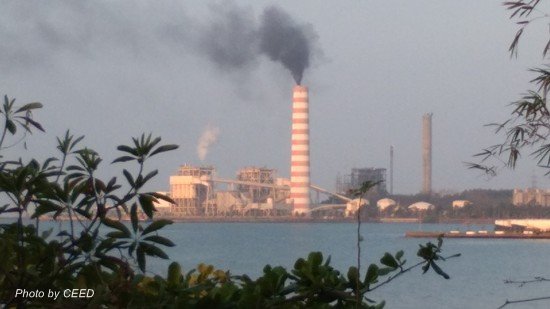Delineating the
socio-economic impact of coal-fired power plants on everyday life

By
FREDDIE R. OBLIGACION
November 10, 2020
Against the backdrop of
controversy surrounding the effects of coal-fired power plants on
people’s lives, I embarked on an original study regarding the
socio-economic impact of 4 major Philippine coal-fueled power plants
in Luzon and Visayas Islands. The data generated highlighted the
personal perspective of residents living in close proximity to the
coal plants.
Included in my research
were the Calaca Power Plant in Batangas, Luzon (600 megawatts); the
Mariveles Power Station in Bataan, Luzon (651.6 megawatts); the La
Paz Coal Plant in Iloilo, Visayas (164 megawatts); and the Masinloc
Coal Station in Zambales, Luzon (630 megawatts).
I limited my study to
residents living with a quarter of a mile from the coal plants and
randomly sampled 410 out of 3,000 households, resulting in a 99
percent confidence level, with a 6-percentage-point margin of error.
Personal interviews were guided by a questionnaire tapping
perceptions of coal operations’ impact on the environment, health,
income, and life satisfaction, as well as, evaluation of the value
and future of coal plants.
Environmentally, an
average of 92 percent of respondents felt that they enjoyed cleaner
air before the coal plant's establishment in their villages. Sounder
sleep, pre-coal plant, was reported by 89 percent of respondents. A
sizeable majority of 74 percent observed that overall environmental
quality deteriorated post-coal plant; only 16 percent thought
otherwise.
Health-wise, an average of
80 percent of the sample believed that they had better health before
the coal plant's installation. Fewer illnesses, pre-coal plant, were
indicated by 77 percent of the sample. The most frequently cited
diseases were lung disease, asthma, primary complex, cough, colds,
skin allergies, cardiovascular diseases, fever, infections,
headache, and diarrhea. The root cause of these diseases was the
coal plant, according to 69 percent of the sample.
As to economic well-being,
the average daily income of respondents from Calaca, La Paz, and
Mariveles decreased with statistical significance from P199 pre-coal
plant to P105 post-coal plant.
Masinloc's average daily
income increased from P285 pre-coal plant to P623 post-coal plant.
Statistically, however, this increase was not significant. In
effect, there was no change in the average daily income.
Life satisfaction was
negatively impacted by the coal plant. Seventy percent of declared
that they were happier, pre-coal plant. Only 14 percent disagreed.
Seventy percent said that their quality of life was better, pre-coal
plant. Only 11 percent believed otherwise. Nineteen percent were
uncertain about the coal plants’ impact on life satisfaction.
Regarding the usefulness
of coal plants, 45 percent opined that these energy sources brought
about more costs than benefits. Only 21 percent saw coal plants as
more beneficial than detrimental.
Asked about the future of
the coal plants, 61 percent preferred a future without coal plants.
Only 17 percent desired a future with coal plants. Fifty-seven
percent signified that if they had the power, they would shut down
coal plants as soon as possible. Only 20 percent expressed support
for continued power plant operations.
In conclusion, it is my
hope that environmental decision-makers worldwide consider
scientifically-derived data before crafting and implementing
environmental policies and laws. An integral part of these processes
must be grassroots consultation. My research reveals that only 45
percent of households were consulted by government agencies.
Participatory democracy must be ingrained in the political zeitgeist
for countries to succeed in their complex search for cleaner but
reliable and economically viable renewable energy which benefits the
public weal.
•
FREDDIE R. OBLIGACION. The author, a senior management consultant,
mentor and scholar of the environment, gender, race, and social
psychology, holds a PhD and MA in sociology from the Ohio State
University-Columbus, MBA and BS Psychology (magna cum laude) from
the University of the Philippines-Diliman. He is currently studying
the social-psychological correlates of environmental activism,
gender inequality, and racism, as well as, presidential polling
techniques and leadership preferences.